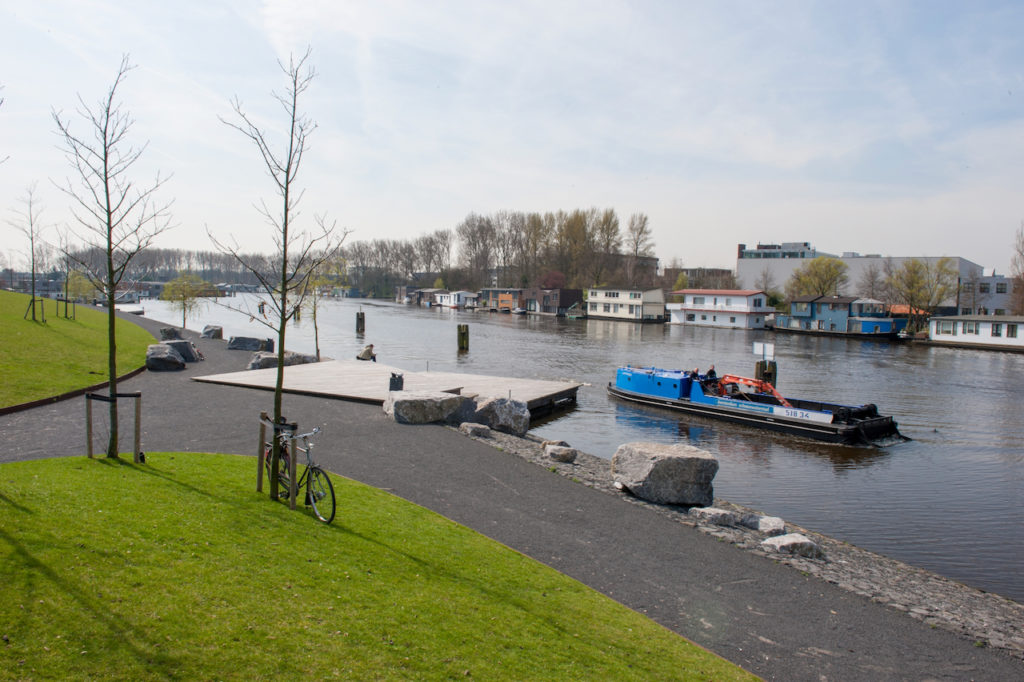
Architect
Buro Sant en Co
Type of Area
Urban canal (surrounded by buildings)
Land/water interaction
Vegetated bank
Riprap
Promenade
Built Environment Types
Moderately built
Moderate green
Scale of Impact
District/neighbourhood
City
Intervention Scale (Spatial)
Large site
Project Types
Urban waterfront restoration
Outdoor recreation
Economic regeneration
Urban/ Rural
Sub-urban area
Visibility and Openness
Fully enclosed
Fully contained view
A new use for a redundant railway track
The Schinkel zone is a unique water park along the Schninkel channelled river that forms an entrance to the city of Amsterdam in the Netherlands. Built on a former Olympic park area, this archipelago consists of four islands that house a diverse range of recreational facilities, there are islands dedicated to tennis, football, nature and floating houses.
The zone forms both a recreational and ecological connection between Vondelpark and the Amsterdam Forest (Amsterdamse Bos) along a former railway embankment that now serves as a cycle path. Thus, the zone increases the accessibility for Amsterdammers to sporting activities. The piers, bridges and reed beds allow the inhabitants and visitors to connect with the water more directly and combines visual beauty with a natural experience of urban ecology.
This Park is part of the blue-green infrastructure of Amsterdam to help realise the aim of providing public access to green spaces and improving sustainability. Recreational uses of the site include jogging, cycling, playing, fishing, sunbathing, swimming watching, relaxing and socialising.
Wooden posts or cormorant poles were placed in the water and on the land. Those in the water provide shelter for spawning fish and the ones on the land a play area for children. This ecological scaffolding thereby contributes to the food supply chain of birds of prey and provides nesting sites. They also act as swimming platforms and bridges for humans. The landscaped park consists of natural stones that offers informal seating, decking, riprap and wooden logs to add an aesthetic appeal to the place.
Perception and Meaning
Imageability
Accessibility
Place identity
Health and Wellbeing
Place affordance
Increased physical activities
Restorativeness
Interaction with Water
Visual
Tactile – fully in water
This project scores generally well in almost all aspects. Accessibility to this level site is good, as it provides connectivity to this area of Amsterdam. As they run along an old railway embankment, the pathways are level, providing easy access for wheelchair and pushchair users.
Seating areas and cobble banks allow for areas of contemplation close to the river. Shade is provided by trees in the area which will improve as they grow, although close to the river the seating is exposed to sun and wind. A lack of edging and rails around the decking is both an opportunity to get close to the water but also a hazard for wheelchair and pushchair users.
The site has plenty of facilities and access for water sports is good. The cormorant poles bring nature close to the people as well as providing space for children to play. This feature also connects the land to the water visually, lending cohesiveness to elements of the design.
